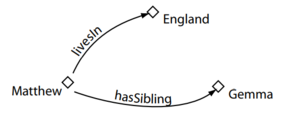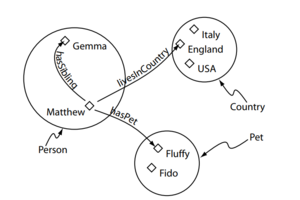Coucou
Sommaire
Chapter 3
What are OWL Ontologies?
Ontologies are used to capture knowledge about some domain of interest. An ontology describes the concepts in the domain and also the relationships that hold between those concepts. Different ontology languages provide different facilities. The most recent development in standard ontology languages is OWL from the World Wide Web Consortium (W3C)1 . Like Prot´eg´e, OWL makes it possible to describe concepts but it also provides new facilities. It has a richer set of operators - e.g. intersection, union and negation. It is based on a different logical model which makes it possible for concepts to be defined as well as described. Complex concepts can therefore be built up in definitions out of simpler concepts. Furthermore, the logical model allows the use of a reasoner which can check whether or not all of the statements and definitions in the ontology are mutually consistent and can also recognise which concepts fit under which definitions. The reasoner can therefore help to maintain the hierarchy correctly. This is particularly useful when dealing with cases where classes can have more than one parent.
3.1 Components of OWL Ontologies
OWL ontologies have similar components to Prot´eg´e frame based ontologies. However, the terminology used to describe these components is slightly different from that used in Prot´eg´e. An OWL ontology consists of Individuals, Properties, and Classes, which roughly correspond to Prot´eg´e frames Instances, Slots and Classes.
3.1.1 Individuals
Individuals, represent objects in the domain in which we are interested 2 . An important difference between Prot´eg´e and OWL is that OWL does not use the Unique Name Assumption (UNA). This means that two different names could actually refer to the same individual. For example, “Queen Elizabeth”, “The Queen” and “Elizabeth Windsor” might all refer to the same individual. In OWL, it must be explicitly stated that individuals are the same as each other, or different to each other — otherwise they might be the same as each other, or they might be different to each other. Figure 3.1 shows a representation of some individuals in some domain—in this tutorial we represent individuals as diamonds in diagrams.
3.1.2 Properties
Properties are binary relations3 on individuals - i.e. properties link two individuals together4 . For example, the property hasSibling might link the individual Matthew to the individual Gemma, or the property hasChild might link the individual Peter to the individual Matthew. Properties can have inverses. For example, the inverse of hasOwner is isOwnedBy. Properties can be limited to having a single value – i.e. to being functional. They can also be either transitive or symmetric. These ‘property characteristics’ are explained in detail in Section 4.8. Figure 3.2 shows a representation of some properties linking some individuals together.
| Auteur | Groupe | Création | |
|---|---|---|---|
| Coucou |


